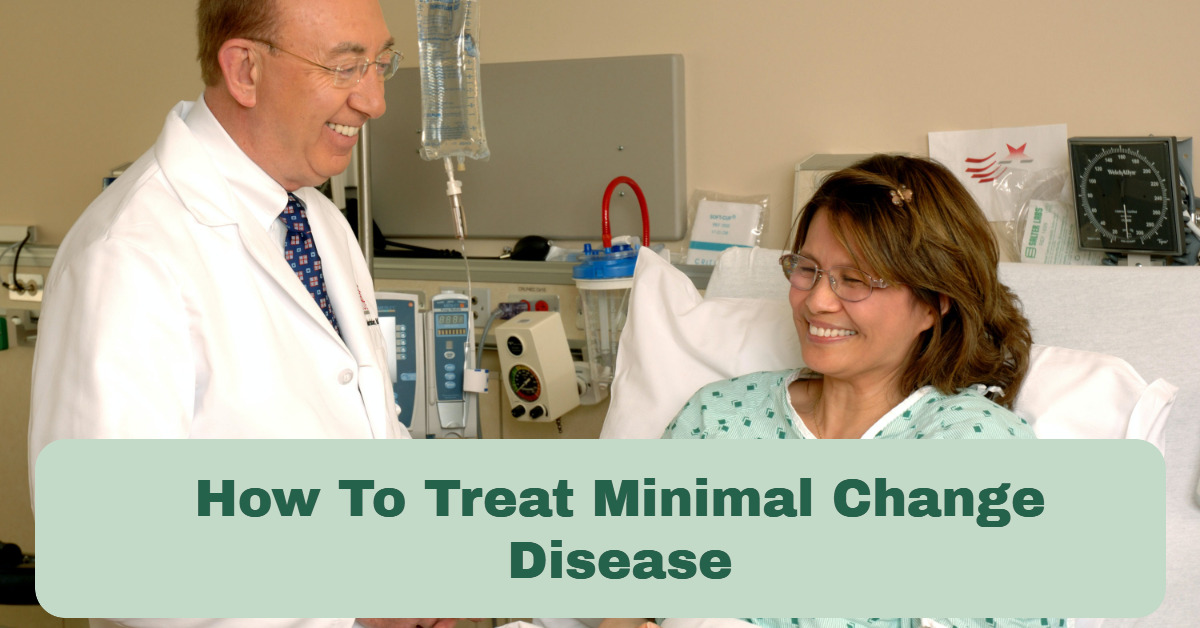
How To Treat Minimal Change Disease: The hallmark of this condition is the presence of significant proteinuria, which is the leakage of large amounts of protein into the urine. Despite its name, minimal change disease can have significant impacts on an individual’s health and quality of life. Fortunately, with proper diagnosis and treatment, most people with MCD can achieve remission and lead normal, healthy lives. Enoughinfo.com

In this doctoral introduction, we will discuss in detail the various treatment options for minimal-change disease, as well as the lifestyle changes that can help support kidney health and prevent the progression of the disease. Additionally, we will explore some of the latest research and developments in the field of MCD, as well as the challenges that remain in managing this condition. By staying informed and taking an active role in their care, individuals with minimal change of disease can live well and thrive despite this challenging condition.
Read Also: 120 Romantic Missing You Messages For Him
What is minimal change disease?
Minimal change disease (MCD) causes kidneys to leak significant quantities of protein into the urine. MCD causes 80% of pediatric nephrotic syndrome, however, it can also impact adults. An aberrant immune reaction affects the kidneys’ glomeruli, which filter waste and excess fluid from the circulation. Edema—swelling—is MCD’s most prevalent symptom. Fatigue, nausea, and frothy urine are some symptoms. Blood, urine, and kidney biopsies can diagnose MCD. MCD is curable with anti-inflammatory drugs and kidney-healthy lifestyle modifications. With proper care and management, most people with MCD can achieve remission and lead healthy lives. 11 Exercises To Keep You Healthy At The Office
FAQs & Answers on How To Treat Minimal Change Disease
1. Will minimal change disease cause kidney failure?
If you have a condition with limited change, kidney failure is uncommon. In the long run, almost all kids and people with MCD get well and don’t relapse. However, urine protein relapses are often treated similarly.
2. Can minimal change disease be cured?
Most youngsters may be treated for illness with minimal alteration using drugs called corticosteroids. To prevent the illness from coming back, some kids might need to continue taking steroids. In adults, steroids are effective; in youngsters, they are less so. Adults may experience more relapses and develop steroid dependence.
3. How long does minimal change disease take to heal?
Steroids are the first and foremost therapy for minimal change illness. Contrary to adults, who often take steroids for two months or longer, children frequently have remission within four weeks.
Causes of minimal change disease
Adults typically have secondary diseases, which means that a different condition or medication caused them. MCD in children is often idiopathic, or primary, meaning that the precise etiology is unknown. The following may happen or be connected to the condition if you have secondary reasons for MCD:
- Allergic reactions
- Using non-steroidal anti-inflammatory medications (NSAIDs), a class of medicines
- Tumors
- Viruses that induce infections
Symptoms of minimal change disease
The primary symptom of minimal change disease (MCD) is edema, or swelling, which typically appears in the face, hands, feet, and abdomen. This occurs due to the kidneys leaking large amounts of protein into the urine, which reduces the amount of protein in the blood and causes fluids to accumulate in the tissues. Other common symptoms of MCD may include:
- Foamy urine: Excess protein in the urine can create a foamy or frothy appearance.
- Fatigue: The body may become weak and tired due to the loss of protein and nutrients.
- Loss of appetite: The edema and fluid accumulation in the abdomen can cause a feeling of fullness and loss of appetite.
- Irritability: Children with MCD may become irritable and cranky.
- Increased susceptibility to infections: Loss of protein in the urine can weaken the immune system and make individuals more susceptible to infections.
It is important to note that these symptoms can also be associated with other kidney conditions and health issues. Therefore, it is important to consult a healthcare professional if any of these symptoms persist or worsen. 22 Top Foods For Promoting Heart Health(All You Need to Know)
How To Treat Minimal Change Disease
In addition to medication, there are several lifestyle changes that can help support kidney health and manage the symptoms of MCD. These include:
1. Maintaining a healthy diet
Eating a balanced diet with low salt and moderate protein intake can help manage edema and maintain kidney function.
2. Staying hydrated
Drinking enough water can help flush toxins out of the body and prevent dehydration, which can exacerbate edema.
3. Managing edema
Elevating the legs, wearing compression stockings, and avoiding standing or sitting for long periods can help reduce edema.
4. Managing infections
Since individuals with MCD are more susceptible to infections, it is important to take steps to prevent infections, such as washing hands frequently and avoiding contact with sick people.
5. Monitoring blood pressure
High blood pressure can worsen kidney function and increase the risk of complications, so it is important to monitor blood pressure regularly and take medications as prescribed.
It is important to work closely with a healthcare professional to develop a personalized treatment plan for MCD, as the specific medications and lifestyle changes may vary depending on the individual’s age, overall health, and other factors. With proper care and management, most people with MCD can achieve remission and lead normal, healthy lives.
How is minimal change disease treated in adults?
Steroids are used to treat nephrotic syndrome in MCD adults. Adults take longer to respond than children, although you may feel better in a few weeks. Even if your symptoms improve sooner, you must finish your medicines.
If you’re a woman who wants to start a family, you should talk to your doctor about how the medications you’re taking may affect this.
Your doctor may prescribe these medications if you exhibit swelling (edema) symptoms:
- ARB or ACE inhibitor medications
- Water tablets are diuretics.
- Limit your intake of sodium (salt).
How is minimal change disease treated in children?
Treatment for MCD is often simpler than for other glomerular disorders. A corticosteroid, often known as a steroid, is typically used in the treatment of nephrotic syndrome in children with MCD. It’s crucial not to abruptly terminate the course of treatment. Your kid will be less likely to relapse (experience the symptoms and signs again) if you adhere to the entire treatment regimen.
Steroid-resistant nephrotic syndrome, or SRNS, is the term used to describe children who do not respond to conventional therapy. Other medication combinations are used in the treatment of SRNS. It is advised that kids with SRNS use an ACE inhibitor or an ARB to lower their blood pressure. These two medications lower the level of protein in the urine while lowering high blood pressure.
Conclusion
Drugs like corticosteroids or immunosuppressants are often used in the therapy of Minimal Change Disease, coupled with adjustments in diet and exercise and close monitoring of kidney function. With proper management, many people with MCD can achieve good outcomes and maintain their kidney function over time.
Recommended:
How Do You Treat And Cure Amyloidosis Naturally
How to Prevent Osteoporosis from Getting Worse
How to Have a Healthy Brain( Requirements)




